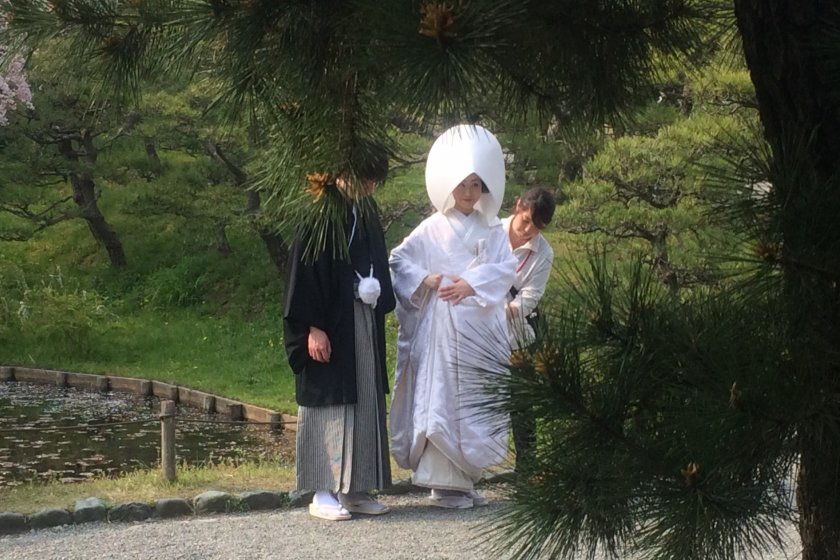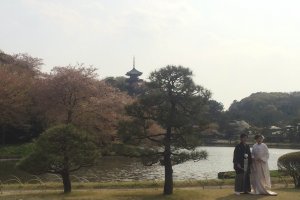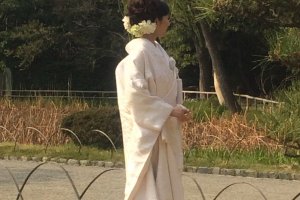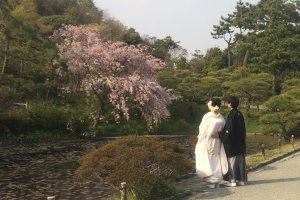Packed in between a heavily industrialized coastline and an affluent residential area, Sankeien Garden makes for a relaxing retreat away from the daily hustle and bustle of life in Japan's second most populous city.
Despite only being opened in 1902, the garden features many original temples and historical buildings which have been painstakingly brought over from various parts of Japan. One particular example includes the impressive three-story pagoda, built around 500 years ago in Kyoto which now overlooks the garden's main pond.
The best way to get to the garden is by catching a bus from JR Sakuragicho Station which stops in front of the Garden's main entrance. From Sakuragicho Station head west towards a big open square, then walk towards the line of bus shelters ahead of you. Go to bus stand 2 and take either bus number 8 or 148 to Sankeien Mae Bus stop; the trip takes about 25 minutes and costs ¥220.
Upon approaching the garden's main entrance I encountered my first pleasant surprise of the day. Several cats appear to have made a comfortable home for themselves outside the main taxi stand; no doubt they are very well looked after by the locals.
Once you enter the park (entrance fee ¥500) you cannot help but notice the abundance of different flowers, plants, wildlife and buildings that make you feel more like you are in Kyoto or Kamakura as opposed to Yokohama.
Some places of particular interest are Sankei Memorial, Rinshunkaku and Teisha Bridge. A leisurely stroll along these areas will definitely make you feel like you are walking in the footsteps of ancient Japan.
Close to this point I encountered my next pleasant surprise of the day in the water lily pond. Here I was dazzled by dozens of beautifully multi-colored carp which constantly mistook my fingers for food.
A good place to stop at is the Sankeien-Saryo, a traditional Japanese style tea house on the southern edge of the pond. A local specialty served here is “Dango”, a Japanese sweet dumpling made from rice. This costs about ¥200 and comes with a free cup of tea.
From here the three story pagoda is a short walk up a slightly steep hill. The pagoda looks just as impressive from up close as it does from a distance. From this point, continue walking for several meters through a bamboo path until you reach an observation point which looks out towards Tokyo Bay. Unfortunately most of the beach has been obscured by heavy industrial development.
If you are lucky enough you may be able to experience my last and without doubt best surprise of the day!
For anyone who knows anything about Japan it will come as little surprise that western-style wedding ceremonies account for over 70 percent of marriages in Japan, making it difficult to see traditional style Shinto wedding ceremonies.
However, on this day, I was lucky enough to see not one but several newly-wed couples, immaculately dressed in full traditional clothing proudly parading around. Prior to today, I had only seen two Shinto-style wedding throughout my entire life in Japan!
After wandering around the park for several leisurely hours, I headed back home content in the knowledge that I had experienced something genuinely cultural in ultra-modern Yokohama.




































